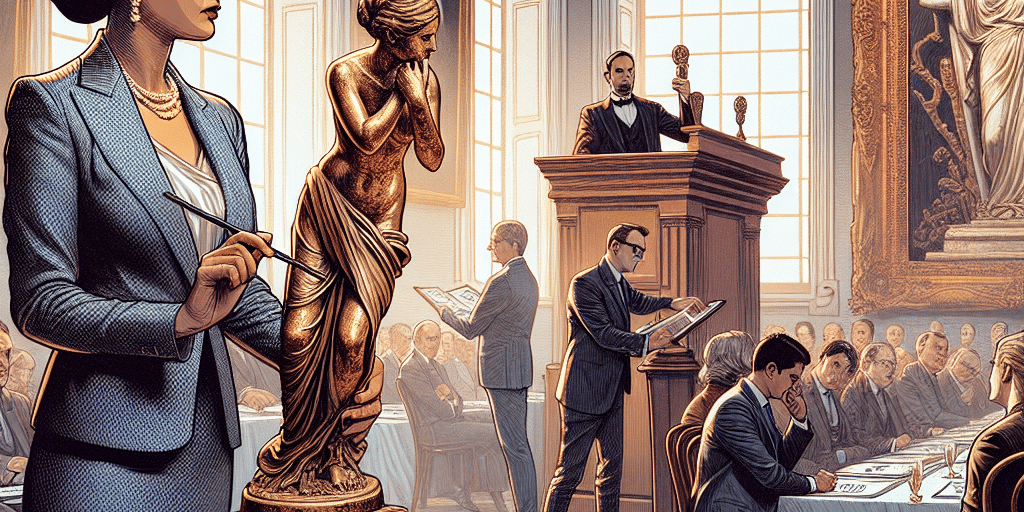The world of art is as vibrant and multifaceted as the masterpieces it comprises. From classical paintings to contemporary sculptures, art has stood the test of time not just as a medium of creative expression, but also as a promising avenue for wealth building. This guide aims to illuminate the path toward savvy investing in art, addressing the fundamentals, strategies, and critical considerations for individuals looking to diversify their investment portfolio.
The Allure of Art as an Investment
Art has a timeless appeal that transcends monetary value. Unlike traditional financial instruments like stocks or bonds, purchasing art offers the dual benefit of aesthetic enjoyment and potential financial appreciation. Historically, the art market has shown resilience and growth, with certain pieces appreciating significantly in value over the years.
Key Advantages:
- Tangible Asset: Art is a physical, tangible asset that can be displayed and enjoyed.
- Hedge Against Inflation: Like real estate or gold, art can serve as a hedge against inflation.
- Diversification: Incorporating art into an investment portfolio can provide diversification benefits, reducing overall risk.
- Legacy: Art can be a valuable heirloom, passed down through generations, enhancing its sentimental and financial value.
Understanding the Art Market
Before diving into art investment, it’s crucial to understand the market dynamics. The art market is influenced by several factors, including historical significance, artist reputation, authentication, provenance, and market trends.
Categories of Art Investment:
- Old Masters: Works created by renowned artists before the 19th century, such as Rembrandt or Vermeer.
- Modern Art: Art from the late 19th and early 20th centuries, featuring artists like Picasso and Matisse.
- Contemporary Art: Works from the mid-20th century to the present, with artists like Jeff Koons and Damien Hirst.
- Emerging Artists: Up-and-coming artists whose works may offer substantial appreciation potential.
Steps to Becoming a Savvy Art Investor
1. Educate Yourself
Knowledge is your best asset. Learn about different art movements, artists, and historical contexts. Attend art fairs, galleries, and museums to refine your taste and understanding. Books, online courses, and art investment forums can also be valuable resources.
2. Set a Budget
Art investment can require substantial capital, but it’s important to start within your means. Establish a budget considering both the purchase price and ancillary costs such as insurance, storage, and maintenance.
3. Due Diligence
Conduct thorough due diligence before any purchase. Verify the authenticity and provenance of the piece. Reputable galleries and auction houses often provide this information, but independent verification through experts can be prudent.
4. Consult Experts
Engage with art advisors, appraisers, and consultants. Their expertise can provide invaluable insights and help mitigate risks. Building relationships with knowledgeable individuals in the art world can also lead to exclusive opportunities and better deals.
5. Monitor Market Trends
Stay abreast of market trends, including auction results and emerging artists. Industry publications, online platforms, and art market analytics can offer valuable data to inform your investment decisions.
6. Diversify
Just as with any investment portfolio, diversification is key. Invest in different artists, periods, and mediums to spread your risk.
7. Long-term Perspective
Art investment is often more about long-term appreciation rather than quick profits. Patience and a long-term perspective can pay off as the value of art typically appreciates over time.
Risks and Considerations
Investing in art is not without risks. Market volatility, liquidity issues, and potential for forgery are significant considerations. Illiquidity means that selling art quickly without a loss can be challenging. Additionally, economic downturns can affect the demand and pricing in the art market.
Mitigation Strategies:
- Invest in quality pieces with strong provenance.
- Maintain a diverse investment portfolio.
- Stay educated and updated on market conditions.
- Use art insurance to protect your investments.
Conclusion
Wealth building with art is an exciting journey combining passion and investment acumen. By understanding the market, conducting meticulous research, consulting experts, and maintaining a patient, long-term perspective, individuals can effectively leverage the art world to diversify and enhance their investment portfolios. While the art market has its nuances and risks, with the right approach and knowledge, it can be a rewarding and aesthetically fulfilling investment avenue.







